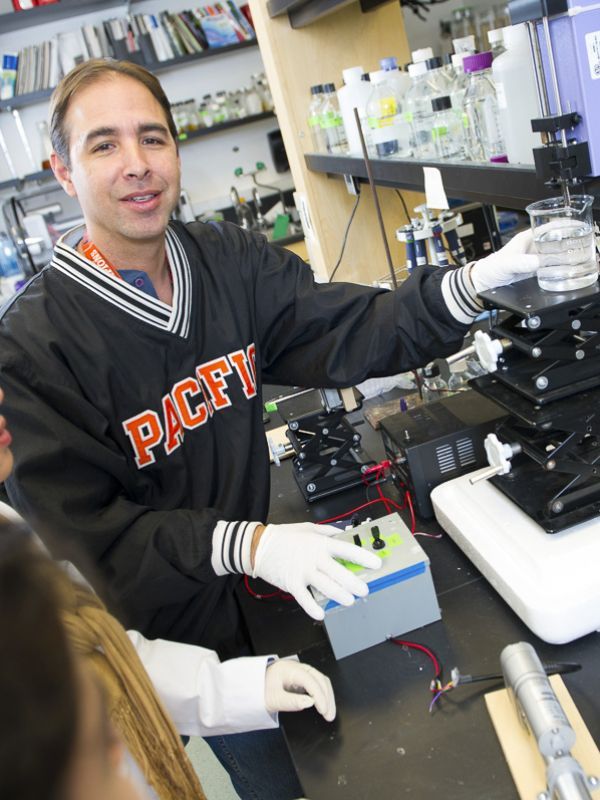
Craig Vierra
PhD, Biochemistry, University of California at Riverside
BS, Biochemistry, University of California at Davis
My primary goal in mentoring individuals is to teach students how to integrate educational content from the classroom and apply this knowledge to everyday practical applications. Specifically, principles and concepts taught in lecture are presented in such a manner to make students search for solutions that benefit and advance society. In the field of biology, there is much to learn from nature.
Much effort is infused to make students aware of the intrinsic beauty of nature and the practical laws that govern biological systems. Through teaching students concepts in genetics, biochemistry, immunology and molecular biology, my teaching philosophy is to develop critical thinking and analytical skills that help students evaluate data from scientific research. In this manner, students are taught to question everything that they encounter in the world and apply their acquired intellectual toolkit to make informed decisions about science.
I enjoy encouraging collaborative projects in lecture and undergraduate research courses as well as creating a positive environment to enable students to excel. I firmly believe that hands-on experiential learning is one of the most powerful methods to enhance student learning, curiosity, and creativity.
My research focuses on understanding the molecular mechanics of black widow spider silk and how these properties relate to the fiber's high tensile strength, elasticity, and toughness. Because spider silk is five times stronger relative to steel (when equivalent masses are compared), it has attracted the attention of material scientists. Scientists are currently trying to manufacture silk synthetically using expression systems in yeast, bacteria and goats. The "holy grail" of the spider silk community is to produce fibers for industrial applications that mimic natural silk. Synthetic silk could be used for bullet proof vests, medical sutures, fishing lines, ropes and chords, as well as applications for nanotechnology.
Furthermore, because silk is biopolymer made of protein, it is non-toxic when degraded and has many environmental advantages over toxic organic materials. Our laboratory has cloned a number of different silk genes that produce proteins assembled into silk threads. We are considered spider gene hunters because we 'fish' for new genes that encode silk proteins. Currently, we are trying to understand how these silk proteins are assembled into the fibers, as well as reveal the molecular mechanisms that govern their silk-gland-restricted patterns of expression.


